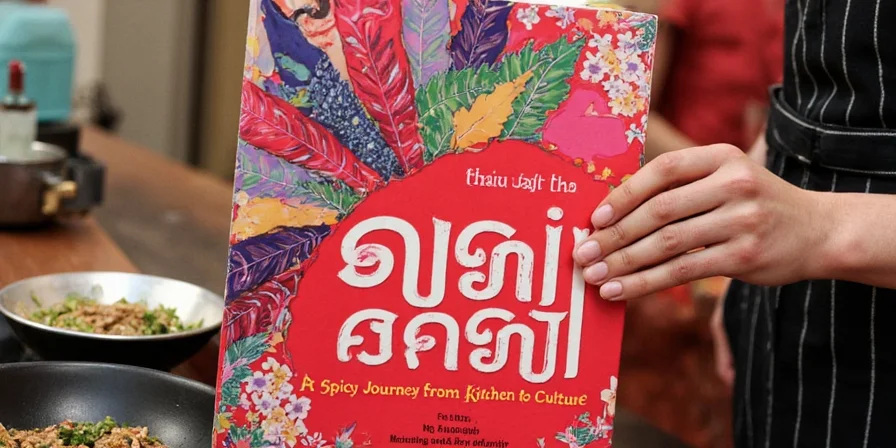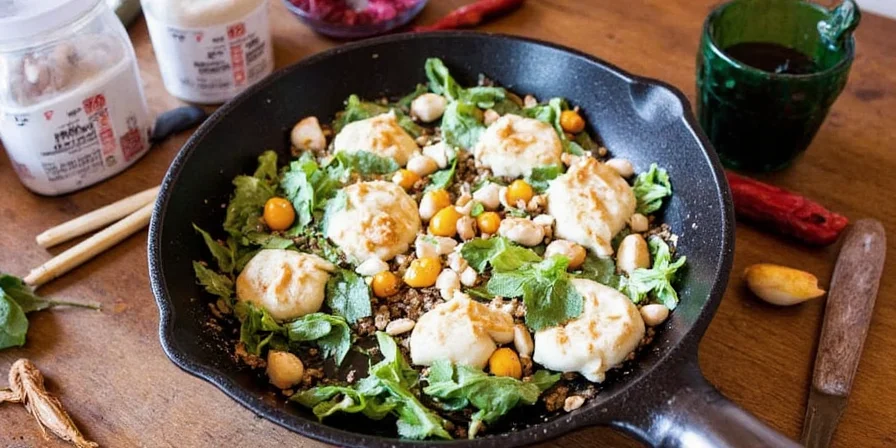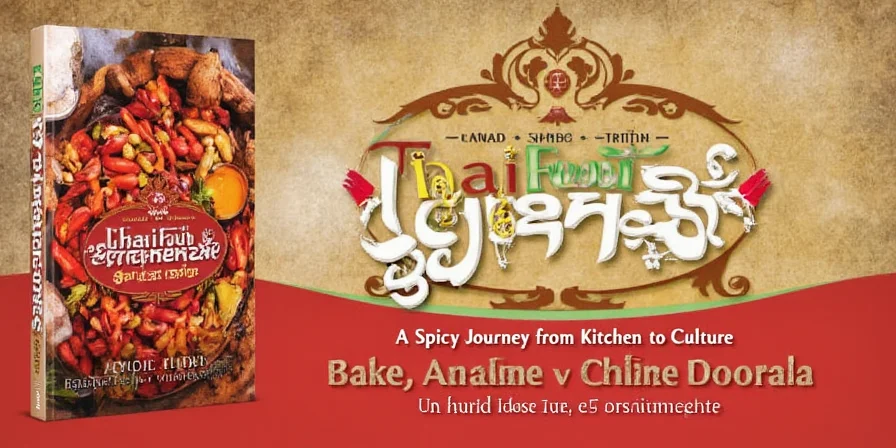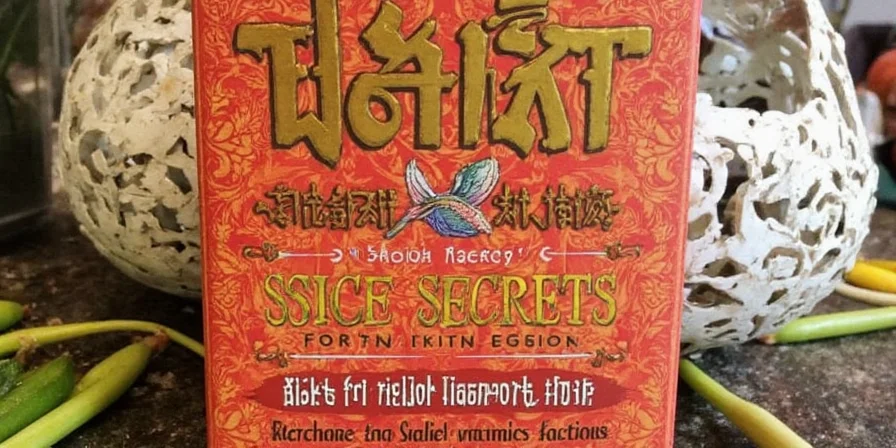Thai Food Spice Secrets: A Spicy Journey from Kitchen to Culture
Description
Ever wondered why Thai food always hits the perfect flavor note — spicy, sweet, sour, and salty? It all comes down to the magic of Thai spices. Whether you're a professional chef or an adventurous home cook, this article will walk you through everything you need to know about Thai food spice traditions, including practical tips, cultural insights, and some fiery fun facts!
Table of Contents
- What Makes Thai Food So Unique?
- Top 7 Thai Food Spices You Need to Know
- Spice Blends That Define Thai Cuisine
- How to Use Thai Spices Like a Pro
- From Street Vendors to Fine Dining: Thai Spice in Practice
- The Science Behind the Heat
- Cultural Roots of Thai Spicing
- Conclusion
What Makes Thai Food So Unique?
Thai cuisine is a symphony of flavor, and the conductor is spice. Unlike many other Asian cuisines that might emphasize one or two dominant flavors, Thai food dances between multiple taste profiles simultaneously. And at the heart of that dance are its signature spices.

Thai cooking uses both fresh herbs and dried spices, often blending them into pastes that form the base of curries, stir-fries, and soups. The use of chilies, lemongrass, galangal, and kaffir lime leaves gives Thai dishes their distinct character.
Top 7 Thai Food Spices You Need to Know
If you're ready to dive into Thai cooking, here’s your essential list of must-have spices:
- Bird’s Eye Chili (Prik Kee Nu): Small but mighty, these red or green chilies pack a punch. They’re used in almost every savory dish in Thailand.
- Lemongrass (Ta-Krai): Not technically a spice, but indispensable. Adds citrusy brightness to soups and curries.
- Galangal (Kha): Often mistaken for ginger, galangal has a sharper, pine-like flavor. Essential in Tom Kha Gai and red curry paste.
- Kaffir Lime Leaves (Bai Makrut): Used whole or sliced, these aromatic leaves infuse dishes with a unique floral-citrus scent.
- Fish Sauce (Nam Pla): Saltiness meets umami. This fermented condiment is the backbone of Thai flavoring.
- Coriander Root & Seeds: The root adds depth to curry pastes, while the seeds are toasted and ground for dry rubs and marinades.
- Shallots & Garlic: These aromatics form the base of most Thai dishes, building layers of flavor before adding heat.

| Spice | Main Flavor Note | Common Dishes |
|---|---|---|
| Bird’s Eye Chili | Heat | Pad Thai, Green Curry, Som Tum |
| Lemongrass | Citrus | Tom Yum Soup, Lemongrass Chicken |
| Galangal | Pine/Eucalyptus | Red Curry, Tom Kha Gai |
| Kaffir Lime Leaf | Floral Citrus | Curries, Steamed Fish |
| Fish Sauce | Umami/Salt | Dipping Sauces, Stir-Fries |
| Coriander Root | Earthy | Curry Pastes, Grilled Meats |
| Garlic/Onion | Oniony/Aromatic | Noodles, Curries, Soups |
Spice Blends That Define Thai Cuisine
Thai cooking is as much about balance as it is about intensity. Spice blends, especially curry pastes, are where Thai flavor really shines. Here are three key spice mixtures every Thai food lover should know:
- Green Curry Paste (Gaeng Keow Wan): Made with green chilies, coriander root, lemongrass, and kaffir lime zest. Surprisingly fresh and vibrant.
- Red Curry Paste (Gaeng Phed): Uses dried red chilies, shrimp paste, garlic, and spices like cumin and coriander seeds. Deep and smoky.
- Pad Thai Spice Mix: While not a paste, this blend typically includes tamarind, chili powder, sugar, and fish sauce for that famous sweet-sour-spicy profile.

Pro Tip: Make extra batches of curry pastes and freeze them in ice cube trays. You’ll save time and always have a punch of Thai flavor on hand!
How to Use Thai Spices Like a Pro
You don’t need a Thai grandmother to make authentic dishes — just a little spice wisdom! Here are some pro-level tricks to bring out the best in your Thai spice arsenal:
- Toast Dry Spices: Even mild ones like coriander seeds gain more aroma when dry-toasted before grinding.
- Use Fresh Ingredients Fresh: Chilies, lemongrass, and galangal lose potency fast. Buy in small batches and store properly.
- Layer Flavors: Start with aromatics, add spices next, then liquids. Letting each layer develop ensures depth.
- Balance is Key: If a dish is too spicy, add a splash of coconut milk or a bit of palm sugar to mellow it out.
- Don’t Overdo Fish Sauce: A little goes a long way. Taste before adding more — salt levels can vary widely by brand.

From Street Vendors to Fine Dining: Thai Spice in Practice
Whether you’re at a Bangkok street cart or a Michelin-starred restaurant, Thai spice is never far behind. Here’s how different environments showcase Thai spice usage:
- Street Food: Think Pad Thai with extra chili flakes, grilled skewers marinated in coriander and turmeric, or som tum made with crushed raw mango and dried shrimp paste.
- Home Cooking: Many families have secret recipes for curry pastes passed down generations. Some tweak the ratios of chilies, shallots, and garlic to suit individual palates.
- Restaurant Kitchens: Professional chefs may use pre-made spice mixes, but they often enhance them with fresh ingredients to maintain authenticity and consistency.

The Science Behind the Heat
Why do Thai dishes feel so hot? Because of capsaicin, the compound found in chilies responsible for spiciness. Thai bird’s eye chilies measure around 50,000–100,000 SHU (Scoville Heat Units), which puts them between serrano and habanero peppers in terms of heat level.
Here's a quick breakdown of common Thai peppers and their Scoville ratings:
| Chili Variety | Scoville Heat Units (SHU) |
|---|---|
| Bird’s Eye Red | 70,000–100,000 |
| Bird’s Eye Green | 50,000–80,000 |
| Padrón Peppers (used in some dishes) | 500–20,000 |
| Cherry Bomb | 2,500–5,000 |

Interestingly, capsaicin isn’t water-soluble, which means drinking water doesn’t help soothe the burn. Instead, reach for dairy (like yogurt or coconut milk) or something acidic (like lime juice).
Cultural Roots of Thai Spicing
Thai cuisine didn’t emerge fully formed; it evolved over centuries under the influence of Indian, Chinese, and Malay traders. Spices like coriander, cumin, and cinnamon came via trade routes and were gradually integrated into local dishes.
Today, Thai spice culture varies by region:
- Central Thailand: Balanced flavors with creamy coconut milk-based curries.
- Isaan (Northeastern Thailand): Known for intense spiciness and use of bitter greens and fermented fish sauce.
- Southern Thailand: Heavily influenced by Malaysian cuisine, featuring bold spices and lots of seafood.

Understanding regional differences can help you tailor your spice usage based on the type of Thai dish you're making. Want to replicate Isaan-style larb gai? Go heavy on the chilies. Dreaming of Southern yellow curry? Don’t skimp on turmeric or kaffir lime!
Conclusion
Thai food spice is more than just heat — it’s harmony, history, and hospitality wrapped in a single bite. From the humble bird’s eye chili to the complex interplay of galangal and fish sauce, Thai spices offer a culinary journey that’s both thrilling and deeply rooted in culture.
So next time you find yourself reaching for that chili paste or tearing up while chopping lemongrass, remember: you’re part of a long, flavorful tradition. Happy cooking!











 浙公网安备
33010002000092号
浙公网安备
33010002000092号 浙B2-20120091-4
浙B2-20120091-4